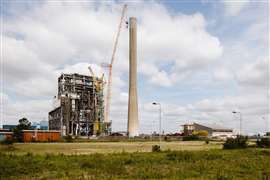Read this article in 中文 Français Deutsch Italiano Português Español
Hochtief CEO on de-risking projects and plans for new construction university
27 February 2024
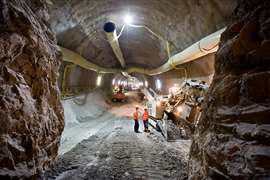 A Hochtief tunnelling project (Image courtesy of Hochtief)
A Hochtief tunnelling project (Image courtesy of Hochtief)
German infrastructure construction giant Hochtief didn’t sign any new lump sum contracts in 2023 as it continues to de-risk its projects.
That’s according to Juan Santamaría Cases, CEO of the company, which counts US-based contractors Turner Construction and Flatiron and Australia’s Cimic Group among its subsidiaries.
The news came as Hochtief unveiled its financial results for 2023 last week, posting a 10% increase in sales to €27.8 billion for the year and a 27% surge in new orders off the back of high-tech infrastructure projects like data centres and energy transition projects.
The company also claimed that 85% of its order book is now made up of “lower-risk” contracts.
Asked by Construction Briefing how he defines “lower risk” and how Hochtief has managed to persuade clients to adopt contract models that push less risk onto the contractor, Santamaría said that high risk projects meant any contracts where Hochtief commits to doing the design and build for a lump sum.
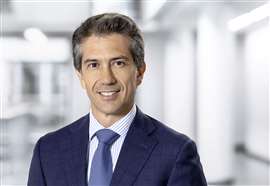 Hochtief CEO Juan Santamaría Cases (Image: Hochtief)
Hochtief CEO Juan Santamaría Cases (Image: Hochtief)
“In 2023, we haven’t won any such projects. Even if we have incorporated some design and builds into our backlog, we’re not taking an inflation risk that could be beyond our control. There could be some of that type of contract that we’re finishing right now but as we complete them, they will disappear from our backlog,” he said.
Hochtief has instead gone after lower-risk models such as alliance-style deals where the contractor works on the design with the client, agrees a target price but shares the risk with the client on over-runs, with a capped exposure to that risk. The company also favours construction management deals, working with the client on the design, agreeing a price for the project, and then moving forward to managing the project for a fee but without taking the risk for the construction itself.
Asked by Construction Briefing how Hochtief has succeeded on persuading clients to agree on adopting a different attitude to the risk profile of contracts, Santamaría said that two things have changed in the market: First of all, clients have realised following the 2008 financial crisis that it is not in their best interest to see contractors take too much of the risk burden because if they collapse underneath it, it ultimately means more cost to the client. And secondly, the increasingly complex nature of high-tech infrastructure projects of the type Hochtief is pursuing require a more collaborative approach in any case.
Santamaría said, “There’s a general consensus that transferring 100% of the risk to contractors is not the best way for different reasons. From 2012 to 2018, there was a big crisis in Europe that followed the 2008 financial crisis. There was not a lot of work in Europe and a lot of contractors started to increase their work in hand by taking unnecessary risk. That drove a situation where a lot of the medium- and even the of large-sized construction companies ended up in trouble.
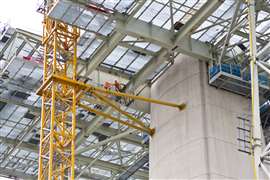 A Hochtief construction site (Image courtesy of Hochtief)
A Hochtief construction site (Image courtesy of Hochtief)
“That was a problem for the clients because they saw their projects delayed significantly. Big over-runs ended up typically in litigation.” The cost of that litigation, in addition to the original design and build contract pushed up costs for clients significantly, he said.
And now the sophistication of a wave of next-generation projects like big data centres powering artificial intelligence, hydrogen or ammonia complexes, projects to extract lithium for batteries from 3,000-4,000m below ground all mean that a collaborative approach that the traditional design and build approach does not allow is required, he added.
“What we’re seeing in the projects nowadays is that the level of sophistication and complexity is increasing significantly. There’s a need for a collaboration when it comes to design engineering between the contractor and the client. And that collaboration works much better if there’s full transparency and honesty in the way they conduct business. So we believe that clients prefer this alternative. As long as contractors are able to deliver on those projects through engineering capabilities, their supply chain and having the right people, it’s a win-win for both parties,” he said.
Acute skills challenge sparks ‘Hochtief University’ plans
Meanwhile, the flip-side to winning a glut of high-tech projects is an acute skills shortage that Santamaría described as “very challenging and very expensive”.
That challenge has prompted Hochtief to set up its own ‘Hochtief University’ to provide training to new recruits and to upskill its existing workforce.
“Talent is very appreciated as we move into all these new-generation projects,” Santamaría said.
“We are putting in place a new concept which is going to be a ‘Hochtief University’. We are going to use it to train our own people and it will have two levels: Level one is for younf people coming out of apprenticeships, school or university and we will be training them to jump into our new projects.
“And then there will be level two courses to upskill our existing people.”
Bucking the trend in Germany
And despite the much-publicised troubles in Germany’s construction market, following the residential property market crash there, Santamaría was positive about Hochtief’s prospects in its home market.
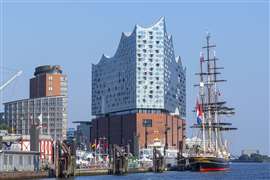 Hochtief built the Elbe Philharmonic Hall in Hamburg, Germany (Image courtesy of Hochtief)
Hochtief built the Elbe Philharmonic Hall in Hamburg, Germany (Image courtesy of Hochtief)
The company increased its order backlog in the country from €2.8 billion at the end of 2022 to €4.5 billion by the end of 2023 thanks to its lack of exposure to the residential market and its focus on social infrastructure projects like hospitals, public buildings and commercial buildings.
And that meant that the company has increased its workforce at a time when other construction companies in Germany have been cutting headcount.
“Over the last two years, we have added more than 7,000 new engineers into Hochtief globally. In that sense, our strategy to move into high-tech energy transition projects, sustainable mobility and all these new trends is working very well,” Santamaría said.
“And we’re very excited with the opportunity that ESG in general is providing us. We are committed to be a green contractor, which means not only complying all the regulations, but also making sure that we develop our green footprint. And that’s why we are becoming leaders in a lot of these sectors, which we’re very committed to it and we’re proud of the result.”
Read more about Hochtief’s 2023 financial results here.
Brought To You By
|
STAY CONNECTED


Receive the information you need when you need it through our world-leading magazines, newsletters and daily briefings.
CONNECT WITH THE TEAM










